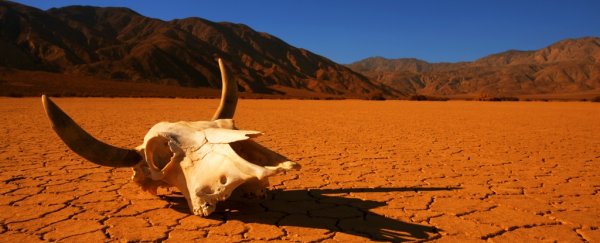Ambitious targets intended to slam the brakes on our current mass extinction may already be slipping out of reach barely a year after they were established, new research suggests.
Data on birds and mammals reveal there's a huge time lag between environmental change and its impact on animal populations, of up to 45 years depending on the species and the drivers of change.
This means the historic 'peace pact with nature' pledged at the United Nation's Biodiversity Conference (COP 15) in December last year may already be out of date, as the extent of this lag was not taken into account in projections of future losses.
"There is wide recognition that time is short for the integrated, ambitious actions needed to stop biodiversity loss by 2050," write Natural History Museum zoologist Richard Cornford and colleagues. "This work shows that time is even shorter than had been thought."
Cornford and colleagues show that the past impacts of habitat loss and climate change explain today's trends in bird and mammal population sizes better than recent impacts. Their findings imply we will not see the overall consequences of changes we implement now for at least a decade in most cases, and until then we will witness already locked-in effects of past land use and climate change on species abundance.
"Larger species typically display longer ecological lags than smaller ones," Cornford and team explain. So we'll see today's impacts on smaller birds and mammal populations in about a decade, but have to wait even longer for the full impacts, either good or bad, to emerge for larger species.
Animal populations will still be responding to past environmental changes as late as 2050.
"Even radical land restoration efforts may therefore fail to end population declines by 2030," the researchers conclude.
How these lags influence different levels of the food chain and different regions are not yet clear. Cornford and colleagues call for urgent research to work this out.
Global rates of extinction are currently tens to thousands of times higher than expected without human interference. We've modified up to 70 percent of all land, leaving less productive habitats in our wake.
Climate change is already rearranging life in our oceans and is only going to get worse.
This new study reveals we must look even further into the future to understand their full impact on biodiversity. Protected areas are an asset in conservation efforts, particularly for birds, and COP15 pledged to secure 30 percent of the planet for protection.
"Even if 30 percent of land is protected by 2030, additional interventions mitigating exploitation will be required to adequately safeguard biodiversity and nature's contribution to people," the team warns.
The good news is that active management of protected areas does mitigate the threats from direct use of wildlife like hunting, which is important for the livelihoods of many people. This can continue if sustainable limits are maintained like hunting quotas.
What's more, taking the effort to manage and restore habitats has direct benefits for human health too, as healthy, functioning ecosystems are less likely to spill diseases into human populations.
Conserving biodiversity is a massive win-win for ourselves, the wider ecosystems we live within, and for climate change mitigation. Our actions had better be fast and meaningful if we're serious about saving what remains.
This research was published in the Proceedings of the Royal Society B: Biological Sciences.
